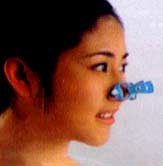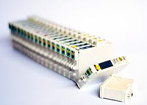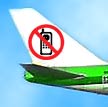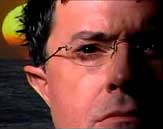New printing technology, described as “radically inventive” by some analysts, could replace RFID tags, according to its creators. The new technology codes objects with invisible infrared markings, which can be read by a handheld scanner or even a mobile phone.
A product labeling system using the technology has been developed by US-based Hyperlabel Technololgies, the company announced today. This system relies on new 'Memjet' printers invented by the highly-secretive Silverbrook Research, which has amassed more than 1000 printing-related patents over the past decade, without ever releasing a product.
Read our article about Silverbrook and Memjet, published earlier.
Hyperlabel appears to be closely linked to Silverbrook Research, and shares research staff with the Australian firm. Hyperlabel's CTO, Paul Lapstun is named as an inventor on numerous Silverbrook Research patents. Hyperlabel's senior vice president, Don Korn is the former vice-president of digital developments at printing and imaging firm, Eastman Kodak.
Documents published by Hyperlabel describe various applications for the infrared labeling system. Most prominent among them is a product labeling system in which invisible infrared tags are printed over the entire surface of a product's packaging.
As well as identifying the product, the tags are positionally coded depending on their location on the label. This makes it possible for a scanner to determine which part of the label it is being pointed at. This feature can even allow a mobile phone to be used to 'click' on a link on a label or an advert, and call up a website or order a product, according to Hyperlabel.
The company suggests it could ultimately be used to 'internet-enable' printed pages in magazines, newspapers or books. Adding infrared scanning capability to phones will add less than $5 to their cost, the company claims.
“Hyperlabel is one of several applications using Silverbrook's interactive paper technology. Other applications include linking of printed publications such as newspapers, magazines and books to online web content and paper-initiated online search,” the company announced in a press statement. “Consumer applications are expected to drive broad adoption of the interactive paper technology, allowing Hyperlabel to leverage the same base of consumer devices and infrastructure” .
The position-detection functions appear to be similar to those developed by Anoto, although Anoto's technology uses visible ink, which is printed in tiny, but detectable dots.
Hyperlabel announced the labeling system today at the World Health Organization (WHO) IMPACT anti-counterfeiting conference. The company is also promoting the anti-counterfeiting possibilities of the technology.
The company has not announced any alliances or agreements with companies in the packaging, warehousing or retail markets, although these would seem to be critical to its adoption on a large scale. With many entrenched competitors already jostling for position in the product labeling market, Hyperlabel has not fully explained what advantages its technology has that will compel the industry to adopt it.
Hyperlabel claims it has several advantages over other technologies which are commonly used for product labeling. For example, it is much cheaper, more reliable and less obtrusive than RFID (Radio Frequency Identification) tags, and does not take up space on a label like a visible barcode, 2D barcode or Q-code.










This sounds amazing,my
This sounds amazing,my experience taught me that laser printers are the best we can find right now.It looks things are getting better and better for this technology. Brochure printing can become so much easier, cheaper and better.
1000 printing related
1000 printing related patents without releasing any product??? This is hard to believe because printing technologies have always needed innovation.